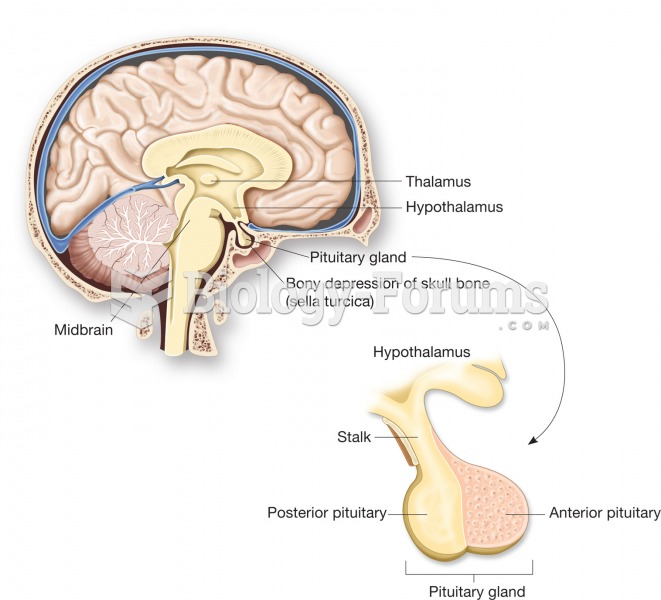|
|
|
Chronic necrotizing aspergillosis has a slowly progressive process that, unlike invasive aspergillosis, does not spread to other organ systems or the blood vessels. It most often affects middle-aged and elderly individuals, spreading to surrounding tissue in the lungs. The disease often does not respond to conventionally successful treatments, and requires individualized therapies in order to keep it from becoming life-threatening.
Many medications that are used to treat infertility are injected subcutaneously. This is easy to do using the anterior abdomen as the site of injection but avoiding the area directly around the belly button.
The top five reasons that children stay home from school are as follows: colds, stomach flu (gastroenteritis), ear infection (otitis media), pink eye (conjunctivitis), and sore throat.
Acetaminophen (Tylenol) in overdose can seriously damage the liver. It should never be taken by people who use alcohol heavily; it can result in severe liver damage and even a condition requiring a liver transplant.
The most common treatment options for addiction include psychotherapy, support groups, and individual counseling.
 The pituitary gland lies just underneath the brain. It is subdivided into anterior and posterior lob
The pituitary gland lies just underneath the brain. It is subdivided into anterior and posterior lob
 If a cylinder(s) is lower than most of the others, use an oil can and use two squirts of engine oil ...
If a cylinder(s) is lower than most of the others, use an oil can and use two squirts of engine oil ...





